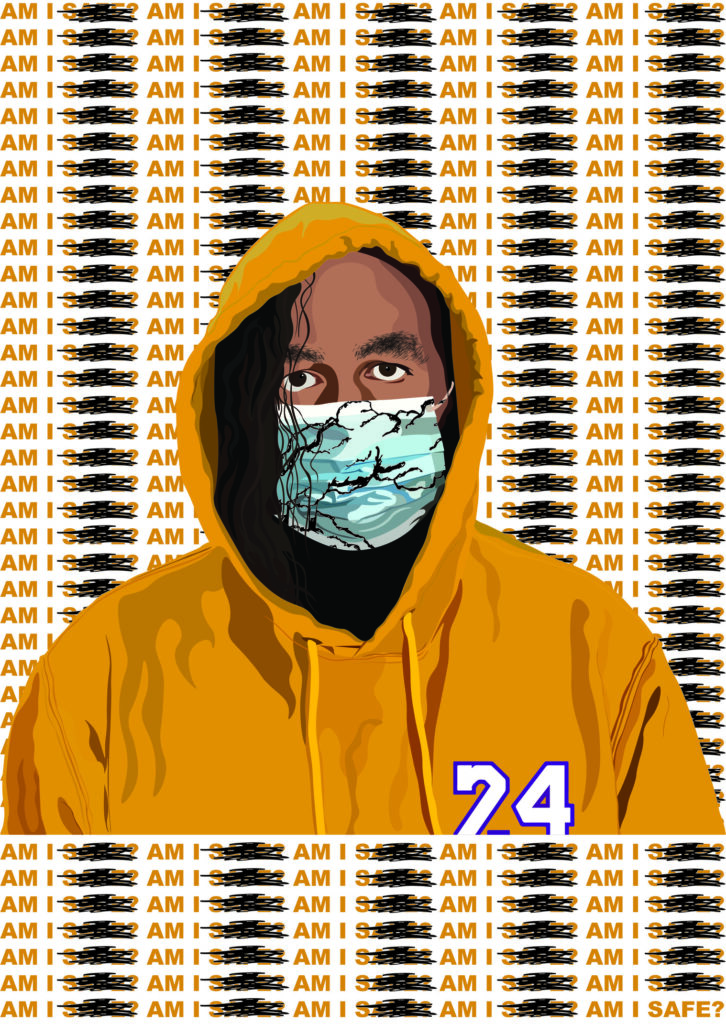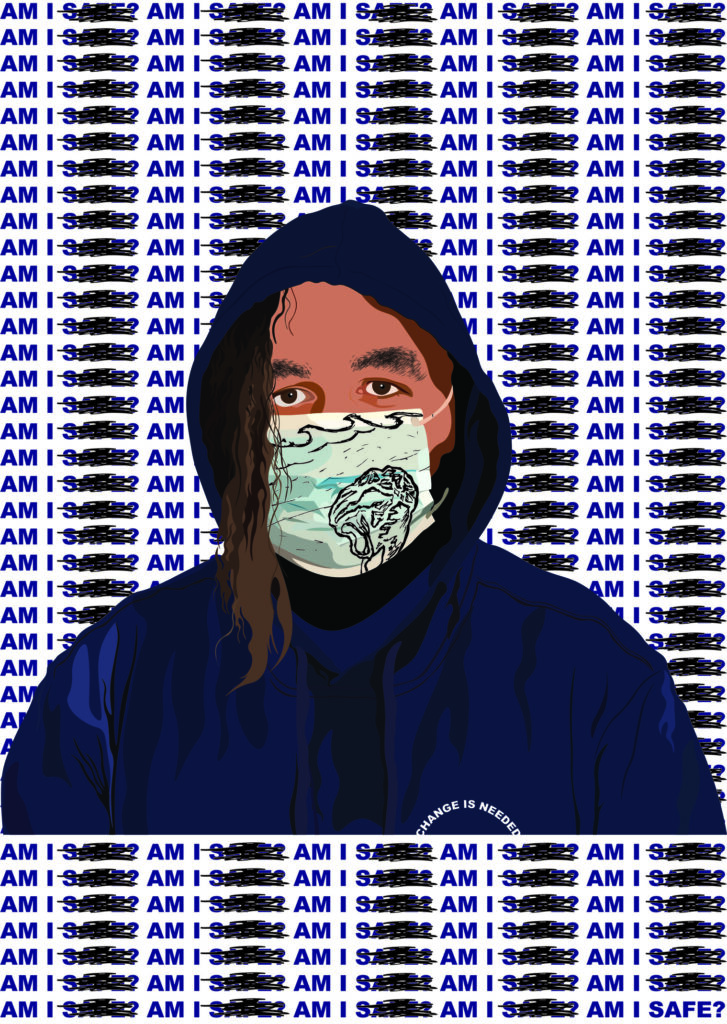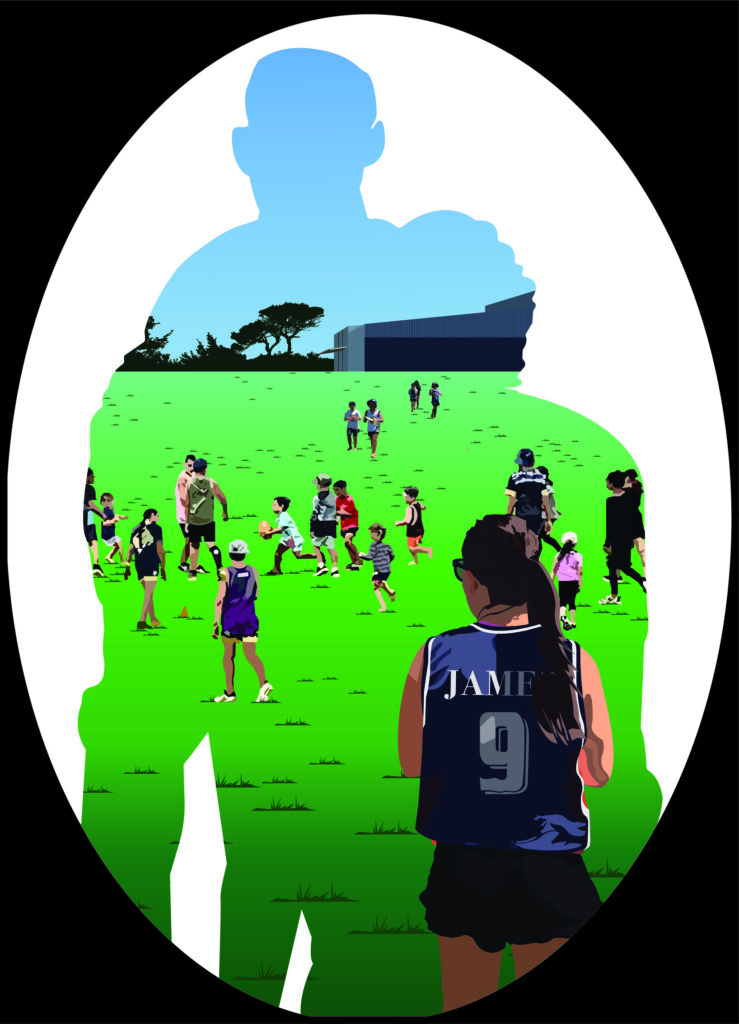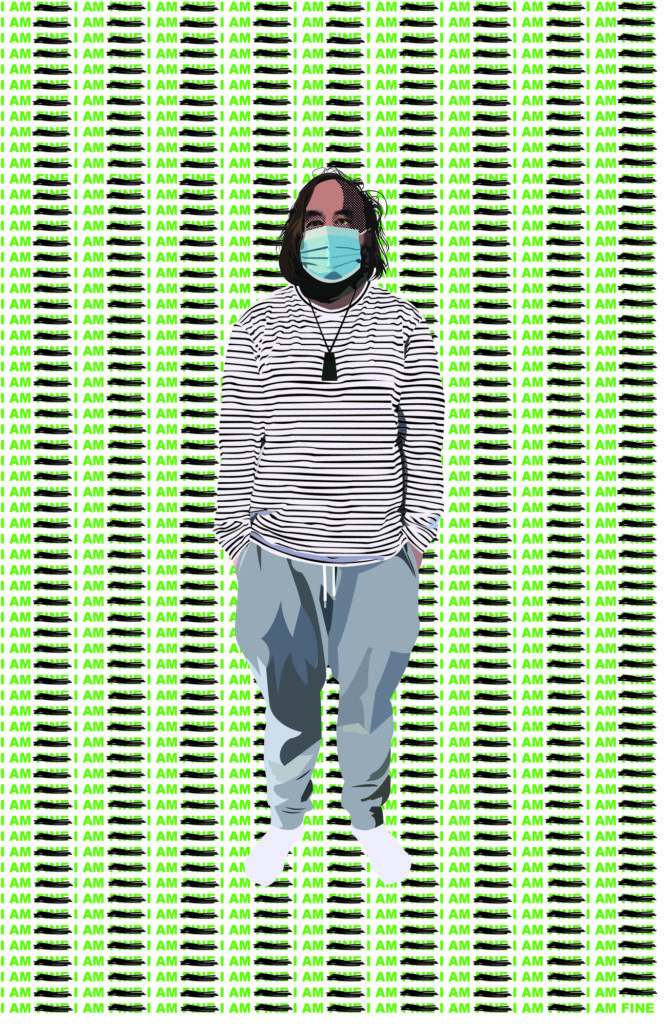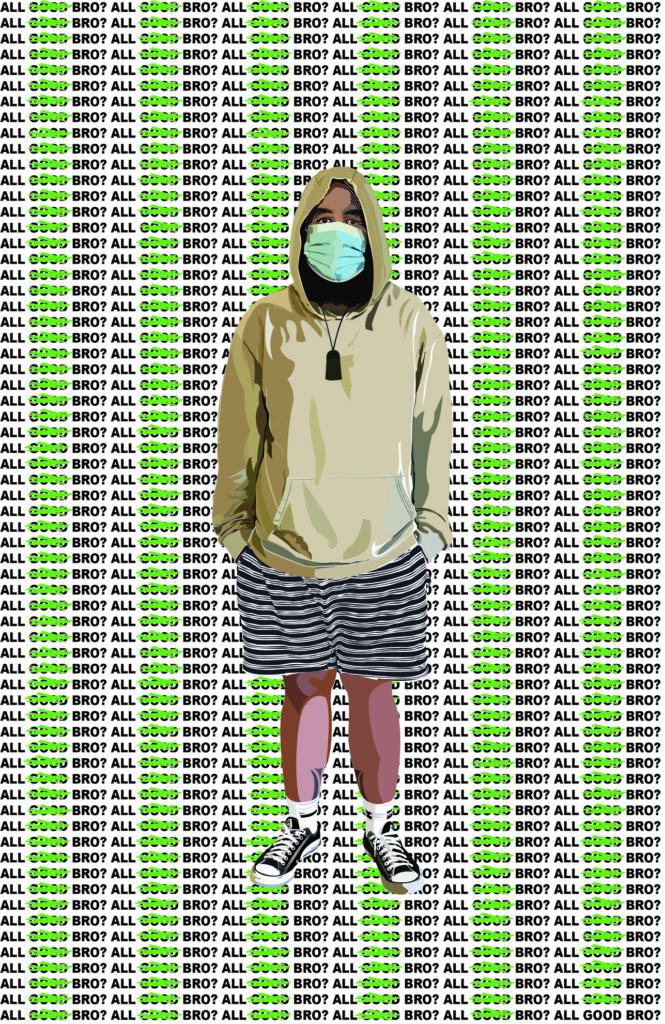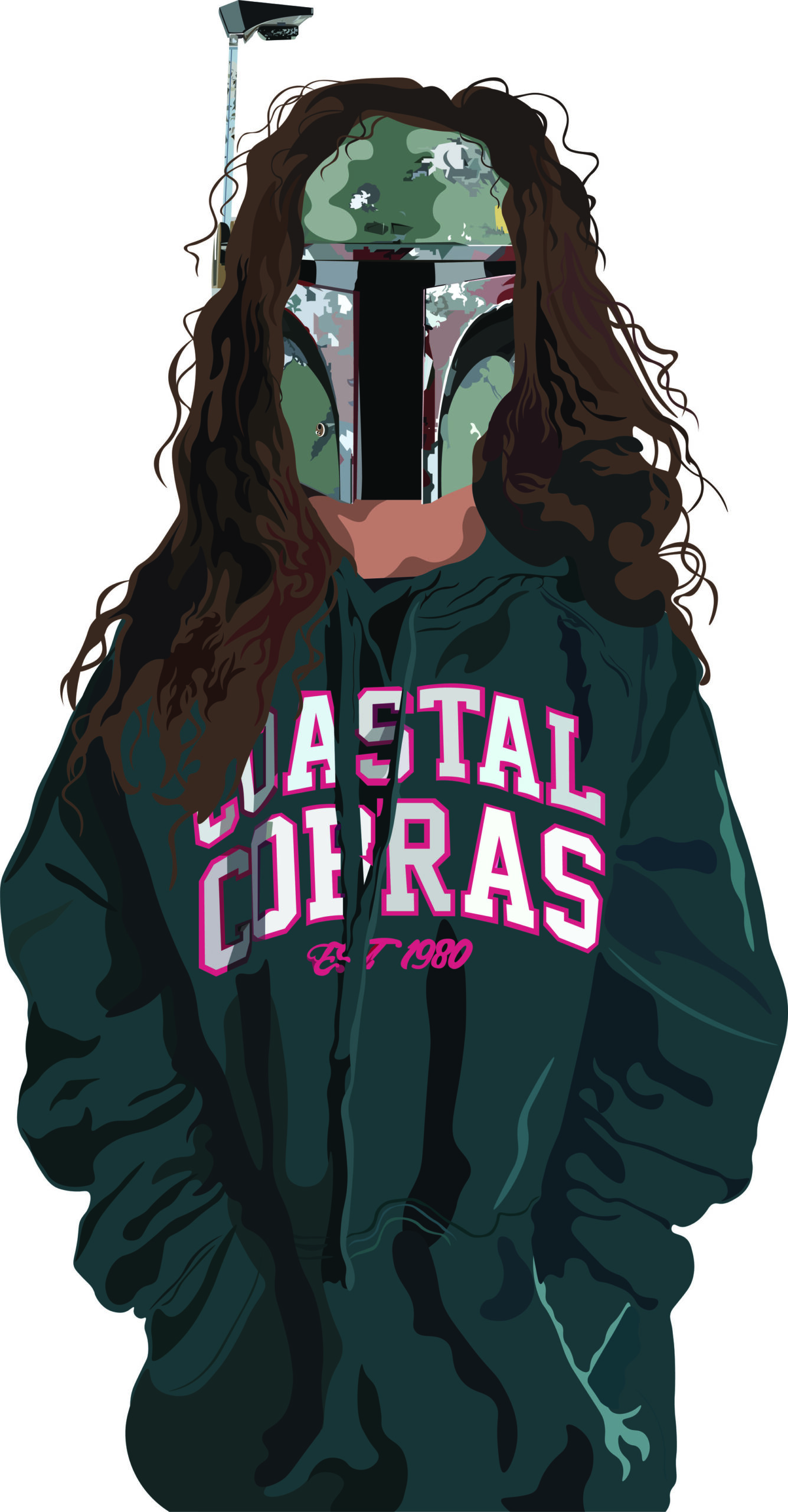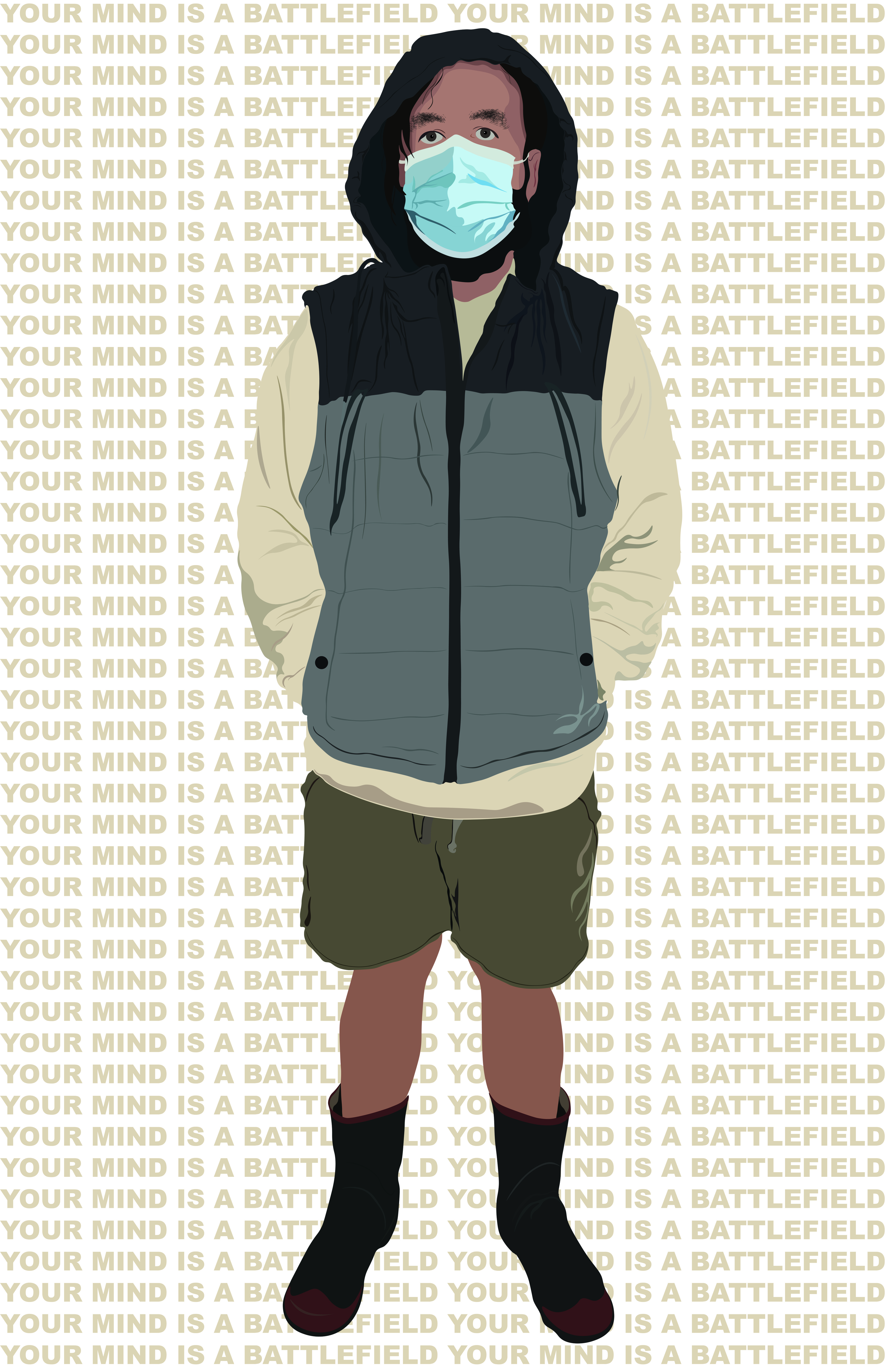The Art of Jordan Quinnell
by Andrew Paul Wood
Palmerston North-based Jordan Quinnell was born and raised in Ōpunake on the Taranaki coast, and his whakapapa is to Ngā Ruahine, Taranaki and Tūwharetoa iwi. He has a bachelor’s degree, post-graduate diploma (with Merit), and Masters of Māori Visual Art (with Distinction) through the Toioho ki Āpiti Māori Arts programme at Massey University in Palmerston North.
The Māori Visual Arts programme provided Quinnell with a high level of individual, social and cultural support, and an immersion in the values of tikanga and Māoritanga, that a more traditional art school might not have been able to provide to the same degree. In the last three decades it has become a major incubator for contemporary Māori artists.
Quinnell’s work has a focus on digital design, illustration and digital print media, and this emerges in the strongly graphic quality of his work, vectorising from photographic images. At times the flatness, lightness and robust figuration reminds one of Japanese ukiyo-e prints. The graphic design elements become their own aesthetic distancing intervention in the image, introducing an element of abstraction. It is this artificial abstraction that distinguishes the artwork as a creative and aesthetic object in its own right rather than merely being a print of a photograph.
While on a summer scholarship as part of the Te Hau Kāinga Histories and Legacies of the Māori Home Front, 1939-45, Quinnell began exploring the wartime history of Ōpunake upon finding newspaper articles about local Māori volunteers digging trenches there as part of defences against the threat of Japanese invasion. He drew parallels with the trench-digging of the Māori Battalion on the front.
These works evolved from evoking the stylised forms and restricted palette of vintage travel posters but evolved considerably into a crisp, pop art-aligned aesthetic. They straddle commercial graphic art and fine art, applying the clarity of commercial messaging to social and cultural themes. It was one of these works that saw Quinnell receive a highly commended for the Te Puni Kokiri Tō Taranakitanga Award at the Taranaki National Art Awards in 2020. Of this the judges said:
‘These two works display a crisp elegance and a hint of Japanese painting and printmaking. Maybe that’s the effect of Mount Taranaki appearing in one of them, our own Mount Fuji doppelganger. That’s fitting given one of these works depicts a man digging a trench during WWII to protect Opunake from Japanese invasion. These images are part of the artist’s work researching the Māori experience of World War II. That context wasn’t apparent when the judging was done. But that’s the strength of this artist’s image-making. The story can be told because their work opens the door to enquiry.’
In 2020 the Taranaki National Art Awards were judged by then Len Lye Centre Curator Paul Brobbel and Waikato Kaiwhakahaere i ngā Hāpori/Community Activator Leafa Wilson. They awarded highly commended to Quinnell’s work Tupuna Wāhine.
Of that piece, Wilson told takehē: ‘Jordan Quinnell’s work Tupuna Wāhine was particular to his tūrangawaewae. ‘In the foreground, a representation of a young māmā holds her pēpi at the feet of their majestic tupuna, Taranaki Maunga. It is an image that not only locates them geographically, but metaphysically. Taranaki is also a protective parent. It’s a moving twenty-first century homage.’
In 2018 and 2022 he was also highly commended in the Te Puni Kokiri Tō Taranakitanga Award at the Taranaki National Art Awards and won the Tō Taranakitanga Award—first prize in 2023.
Quinnell’s work for his MFA, guided by his supervisors Robert Jahnke and Erena Arapere, evolved into whole new levels of depth and complexity, particularly in their sensitive exploration of identity and mental health. These works, Masters of the Mask, consist of vectorised self-portraits in various costumes and masks, incorporating text. The artist uses the technique of autoethnography to explore the social pressures and stigmas faced by young Māori men against a broader background of anxiety caused by the Covid pandemic, climate change and other catastrophes.
The premise is that society expects men to bottle things up and keep their feelings behind a mask. Māori males aged 15-24 have the highest suicide rate in Aotearoa. These works reference diverse artists, Glenn Ligon, Brandan Odums, Ralph Hōtere, Abdul Abdallah, Christian Thompson and Kelcy Taratoa. These works were shown at the Lysaght Watt Gallery in Hāwera in December 2021, and one of the mask works earned Quinnell that 2022 Taranaki National Art Awards highly commended prize. Of this work the judges said:
‘This triptych of graphic illustrations is a timely and important conversation about indigeneity and mental well-being. The use of the face mask, now a ubiquitous object of our post-Covid lives, as the subject upon which to discuss the mind as a battlefield. Sitting within the text is a pivotal question: All good bro?’
Quinnell is rapidly emerging as an important contemporary artist in the Taranaki area. Of his work, Michaela Stoneman, art coordinator for South Taranaki District Council, told takehē:
‘His distinctive, graphic, illustrative style reflects his world view and explores themes around identity, Māori history, whanau kōrero, mental health and wellbeing. His work simultaneously reminds me of DC comics I read in the 1990s and the flat colour portraits and landscapes of 1970s Robin White. By presenting himself in self-portraits behind different masks, looking straight down the lens with obscured features, he is being both brave and evasive, hiding behind a perceived safety-net of self-protection.’
Quinnell deftly uses the tools of graphic design—colour, shape, text, vectorisation, text and typography, and direct communication of message—to make art that transcends the technical being both meaningful and beautiful.
Jordan Quinnell is an emerging contemporary Māori artist who grew up in Taranaki and now lives in Palmerston North. He has a Bachelor of Art in Māori Visual Arts, a post-graduate diploma (with Merit), and Masters of Māori Visual Art (with Distinction) through the Toioho ki Āpiti Māori Arts programme at Massey University in Palmerston North. His artistic practice is based mainly in digital illustration and printmaking. He was twice highly commended for the Te Puni Kokiri Tō Taranakitanga Award at the Taranaki National Art Awards, and group shows have included Mounga at Toi Māori Gallery, Ka Ora Taku Toa: A proud celebration of Ngāruahinetanga at Lysaght Watt Gallery and Taha Hinengaro: Mental Health Matters at The Collaboration Gallery. His first solo exhibition, Masters of the Mask, was held at the Lysaght Watt Gallery in 2021.
Andrew Paul Wood is a Timaru-based independent cultural historian and commentator, art writer, book reviewer, essayist, translator and poet. He writes for a number of prominent publications in Aotearoa and Australia. He was the co-editor and translator with Friedrich Voit of the collection Karl Wolfskehl: Drei Welten, Three Worlds (Cold Hub Press, 2016), Dunediniad: A Psychogeographical Ode (Kilmog Press, 2018) and The Sonnets of Walter Benjamin (Kilmog Press 2020). His latest book is Shadow Worlds: A History of the Occult and Esoteric in New Zealand (Massey University Press, 2023).
